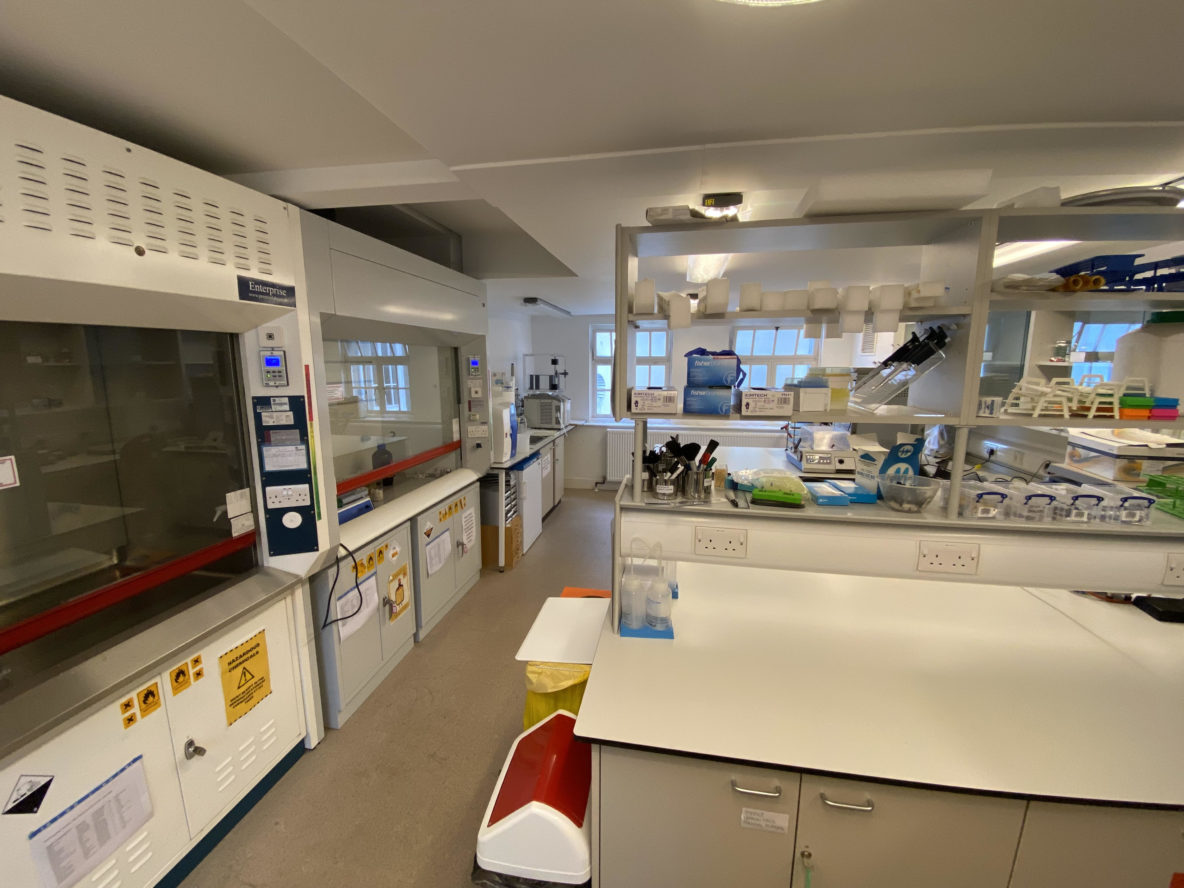Below is a brief summary by Samuel Kinirons, who recently undertook a month-long Visiting Studentship at the University of Edinburgh’s Andy Barlow Laboratory. Samuel’s studentship was supported by SSNS through a Postgraduate/Early Career Research Grant.
In 2024, I undertook a month-long Visiting Studentship at the University of Edinburgh’s Andy Barlow Laboratory. This was supervised by Dr Sam Leggett and involved conducting dietary isotopic analysis and commissioning radiocarbon dates for eight Viking Age burials. My PhD research, which is funded by Research Ireland, focuses on the Viking Age furnished burials of Ireland and Britain. I aim to further our understanding of how these burials changed temporally and regionally in order to chart the development of regional identities among groups of Scandinavian descent in these islands. To achieve this a good understanding of the chronology of these burials is required.
A major stumbling block regarding the development of this understanding has arisen from a series of radiocarbon dates returned for a group of furnished burials excavated in Dublin between 2002 and 2005. These dates were surprisingly early, suggesting that some of these individuals were buried prior to the first historically attested Scandinavian settlement in Dublin. Not only do these dates not sit comfortably with the historical chronology, but they are also at odds with the typochronology of the artefacts accompanying the burials. The dates have increasingly been called into question, with many suggesting that these discrepancies may be the result of marine reservoir effects. This project sought to test this hypothesis.
I transported samples of bone from the eight individuals to the Andy Barlow Laboratory at the University of Edinburgh. Here I was taught how to extract collagen. Once this was completed, I transported the collagen samples to SUERC, where they were submitted for radiocarbon dating and isotopic analysis. δ13C, δ15N and δ34S isotopic data were returned for all eight samples. A preliminary inspection of these data indicates that some of the individuals did consume a moderate amount of marine protein. The exact proportions have yet to be determined but it seems likely that in some cases there may indeed be a marine reservoir effect that will require correction. Interestingly, the new radiocarbon dates are more precise and generally slightly later than those commissioned c.20 years ago, thanks in part to technological advances in the intervening years. This means that even before the application of marine reservoir corrections, this group of burials now sit much more comfortably with our historical chronology of Viking Age Dublin. The chronological clarity resulting from this work has substantially contributed to our understanding of how both Viking Age burials and Viking Age Dublin changed over time.
The funding provided by the SSNS allowed me to stay in Edinburgh throughout the process of collagen extraction. This afforded me the invaluable opportunity of not only learning a new technical skill but also allowed me to get to know the staff and students working at the School of History, Classics and Archaeology. This experience will stand to me as my career progresses and will hopefully lead to further collaborations. The results of this project will be published in a peer-reviewed journal in the near future.
- Samuel Kinirons, 9 April 2025
(Header Photo: S. Kinirons, Andy Barlow Laboratory)

